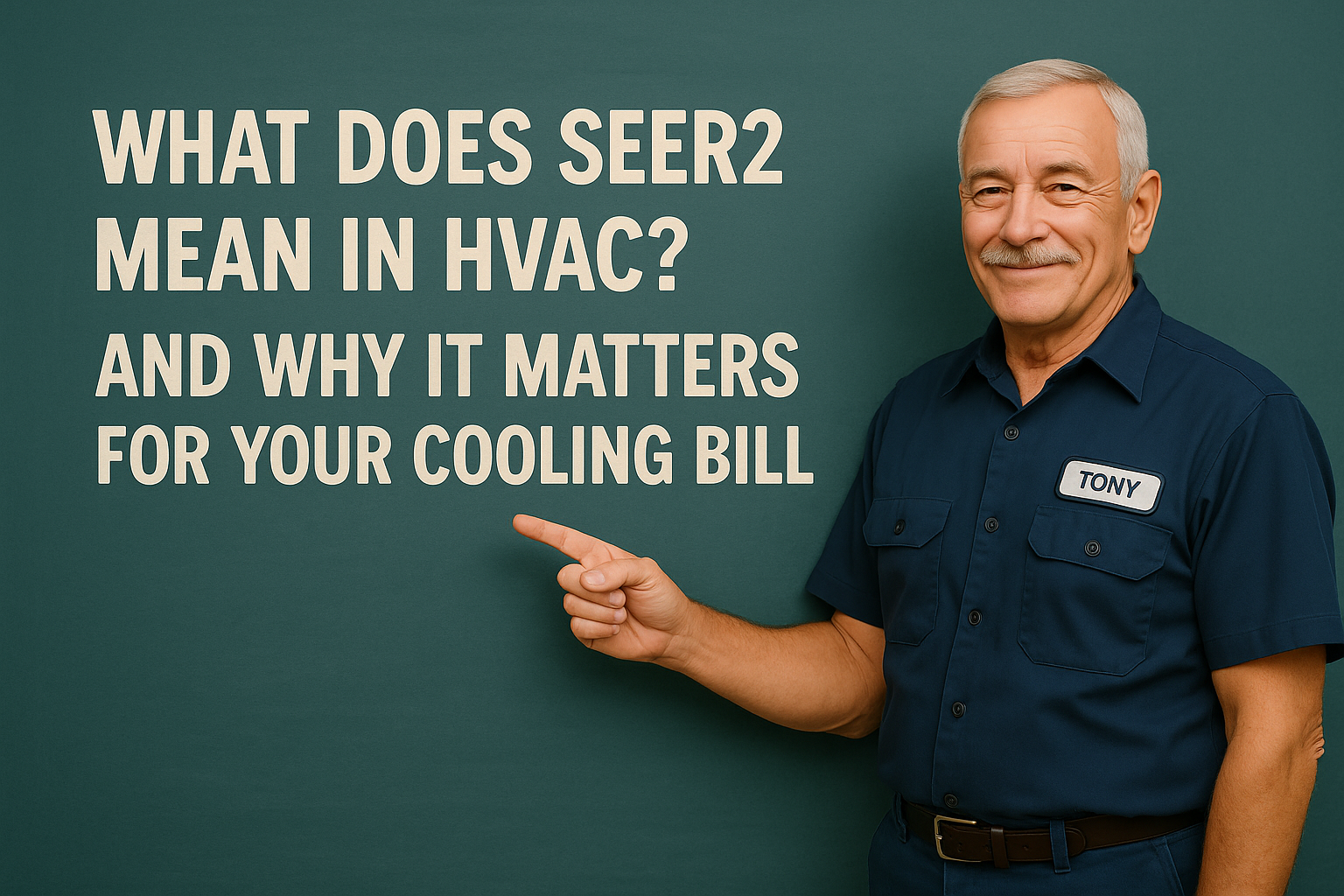🛠️ What Does SEER Stand For?
SEER stands for Seasonal Energy Efficiency Ratio. It measures how efficiently your AC unit operates across a typical cooling season—basically, how much cooling you get per unit of electricity.
📈 Think of it like miles per gallon for your AC system.
The higher the SEER, the more efficient the unit. For example, a system with SEER 14 uses less energy to cool your home than one rated SEER 10.
🧾 Reference:
U.S. Department of Energy – Central Air Conditioners
This page explains SEER in detail and offers tips for choosing an efficient system.
🔁 SEER vs. SEER2: What’s the Difference?
In 2023, the Department of Energy introduced SEER2, an updated testing standard that reflects more realistic home conditions.
| Feature | SEER | SEER2 |
|---|---|---|
| Duct Pressure | Ideal conditions | Real-world airflow tested |
| Test Protocol | Old lab method | New M1 testing procedure |
| Energy Usage | May be understated | More accurate and higher |
🏠 SEER2 uses the M1 test procedure, which simulates static pressure from filters and ductwork. This makes it a better predictor of real-life performance.
🧾 Reference:
AHRI – Understanding the SEER2 Efficiency Standard
A helpful breakdown of SEER2, including regional requirements and equipment implications.
💡 Why Should You Care About SEER2?
✅ Lower Bills
Higher SEER2 = lower monthly energy costs, especially during peak summer months.
✅ Eligibility for Rebates
Many federal and state programs now require SEER2-certified equipment to qualify for incentives.
🧾 Reference:
Energy Star – Tax Credits for HVAC Equipment
See which air conditioners qualify under federal energy efficiency programs.
✅ Compliance with 2023 Rules
As of January 2023, all new residential central AC systems must meet updated SEER2 minimums:
-
13.4 SEER2 in the North
-
14.3 SEER2 in the South and Southwest
📊 What’s a “Good” SEER2 Rating?
If you live in a warmer climate, you want at least 14.3 SEER2, which is exactly what the Goodman 5 Ton R-32 System delivers.
Here’s a quick tier guide:
-
13.4 SEER2 – Minimum efficiency (Northern states)
-
14.3 SEER2 – Required in the South
-
16+ SEER2 – High-efficiency systems for long-term savings
🧾 Reference:
DOE Regulatory Guidelines – SEER2 Compliance Map (PDF)
Region-by-region SEER2 requirements for homeowners.
🧰 Tony’s Pro Tip
“Don’t blindly chase the highest SEER2 rating. It’s more about finding a system that fits your space, usage, and climate. A 14.3 SEER2 system like the Goodman 5 Ton gives you a smart balance of savings and simplicity.”
🎯 Final Take: SEER2 Is the Smarter Standard
SEER2 is the next evolution in home cooling efficiency—and it’s here to stay.
The Goodman 5 Ton 14.3 SEER2 R-32 System gives you:
-
Modern compliance
-
Long-term savings
-
Eco-friendly performance (thanks to R-32 refrigerant)
If you’re upgrading your HVAC, don’t just shop on price—shop smart with SEER2 in mind.
Have more questions?
💬 I’m Tony—let’s chat anytime.
In the next topic you will read about: R-32 Refrigerant: Why It’s the Future of Home Cooling







